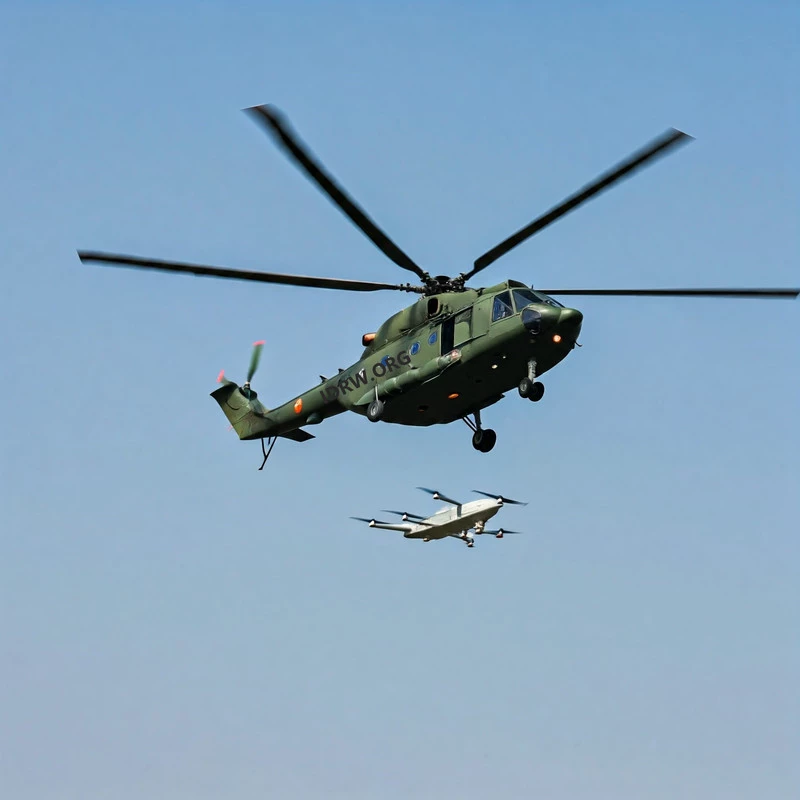Additive manufacturing will be "ubiquitous" in defence within a decade, survey indicates
Add bookmarkThe use of additive manufacturing – or 3D printing – will be ubiquitous in the aerospace and defence (A&D) industry within the next 10 years.
In a small, targeted survey of A&D professionals, over half (54%) of respondents strongly agreed that the use of additive manufacturing would be widespread in the A&D sector (see Appendix A). In total, 83% gave a positive response to the statement about the universal uptake of 3D printing in the future.
The timeframe is subject to a number of factors, most pressing of which will be the continued development of the technology and agreeing industry standards for final part analysis and end user acceptance, but the message is clear: Additive manufacturing will have a significant impact on the design of complex, bespoke defence and aerospace products that break existing material and engineering limitations. One respondent said it would take longer than 10 years to but believes there will be "substantial changes" to manufacturing processes in that time due to the advancement of 3D printing technology.
Asked if there would be an additive manufacturing "revolution," the majority of respondents agreed this was probable in the next 20 years (see Appendix B). Over a quarter (29%) of respondents said there definitely would be a revolution in that timescale while 38% said it would "probably" happen. Just 33% of respondents believe it is unlikely or implausible.
There remains a great deal of intrigue – mystery even – about additive manufacturing yet the consensus opinion within the aerospace and defence industry is overwhelmingly positive. The potential is huge. In 2012, the defence industry contributed 10.2% of additive manufacturing’s $2.2 billion global revenue and that shows no sign of abating.
In June Deloitte University Press published a report, ‘3D opportunity in aerospace and defence: Additive manufacturing takes flight’, which concluded that "there is little doubt that AM’s penetration into the aerospace and defence value chain will grow."
According to Deloitte, one of the key factors holding the industry back is the knowledge gap. For its AM study, Deloitte interviewed a number of A&D practitioners to understand more.
"They [A&D industry representatives] are apprehensive about additive manufacturing … they are looking for successful case studies before committing capital to AM."
But that’s not the main concern according to Defence IQ’s short survey where the most divisive factor for the A&D industry was identified as quality assurance (QA). Appendix C shows that 58% of respondents believe final part analysis and QA before releasing products to the end user is the main concern.
One respondent called it a "big challenge" and underscored that components made using traditional manufacturing process have different mechanical and performance properties that printed ones. In an industry where material performance is so key – particularly in the case of armour protection and aircraft skins – this is a major challenge and could potentially prove to be a step too far.
Currently there are no industry standards for 3D printed parts in the A&D industry; developing and agreeing upon those will be a key enabler for the mass uptake – or not - of this additive technology.
Indeed, thinking about the findings from the Deloitte study, just 17% of respondents in the Defence IQ survey highlighted lack of knowledge as a concern. That figure is likely on the low side however since many of the survey respondents are already involved in the additive manufacturing market in some capacity so will naturally be more au fait with the technology. If that question was expanded to the wider A&D industry the response would no doubt be higher, so A&D practitioners’ lack of knowledge addressed in the Deloitte study should remain a central point of debate..
The speed at which it takes to 3D print a component was identified as the second biggest concern according to Defence IQ’s study. It stands to reason: The longer it takes to manufacture a product the more expensive it is. And yet, due to the nature of the A&D industry and the other advantages 3D printing offers, it’s likely that this isn’t – or shouldn’t – be a concern at all.
As one respondent said, "low quantity production runs of a wide variety of parts, makes additive manufacturing a good match for in the defence and aerospace market."
3D printing is ideally suited to aerospace and defence since many contracts require bespoke designs in low quantities. It’s an expensive game buying new equipment and plant to fulfil each small contract. Additive manufacturing promises to wipe out the need for specialist machines for one-off jobs; in theory in the future all you’ll need is a 3D printer.
The slow speed of the printing process, which will improve over the coming years regardless, will be offset by the cost-savings in other areas. As Appendix D shows, the cost-effective 3D printing process is one of the chief advantages of the technology. It is cost effective since there is no waste - you are adding material rather than chipping it away. As the technology continues to mature, lead-times and costs will fall while printing speeds improve.
The most notable benefit additive manufacturing offers is the ability to design new components not before possible. Almost two thirds (63%) of respondents said that pushing the boundaries of engineering and breaking the old rules of manufacturing with 3D printing will ultimately result in better products and more innovation. Additive manufacturing allows engineers to create complex geometries out of polymers, metals, and composites that are not possible through traditional manufacturing techniques. Ensuring the structural integrity and through-life performance of components is not compromised will be the challenge, but the potential for what can be achieved with 3D printing is remarkable.
The inaugural Additive Manufacturing for Defence and Aerospace Summit will address the key concerns and opportunities for industry. Taking place in London next February, the event - the only one of its kind in the Europe - will enable you to understand more about on-going research programmes and hear from key stakeholders who have implemented 3D printing processes in final part production. Download the agenda below to find out more about who will be speaking and the topics covered.
[eventpdf]






















